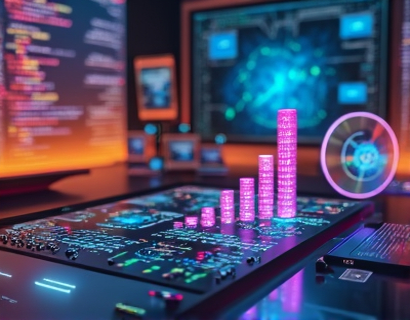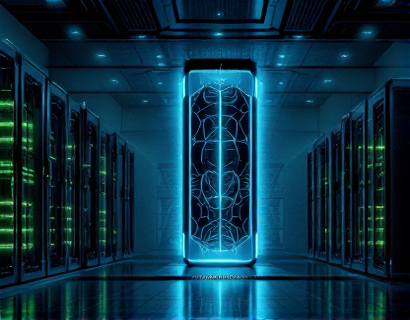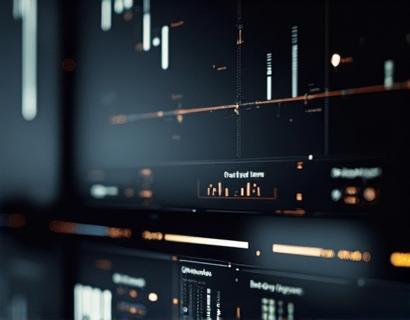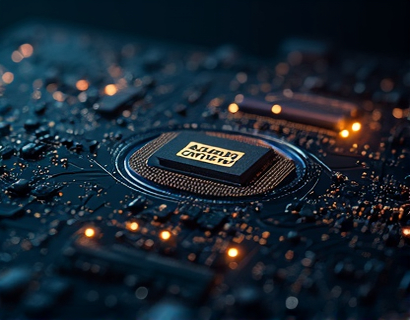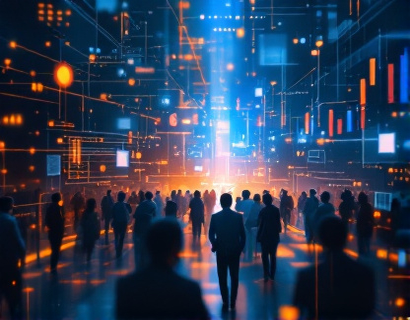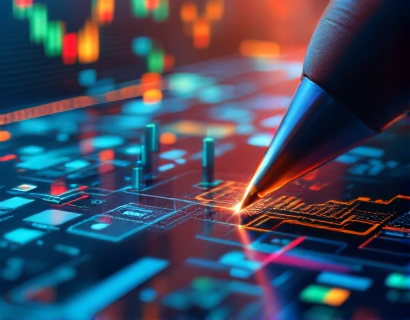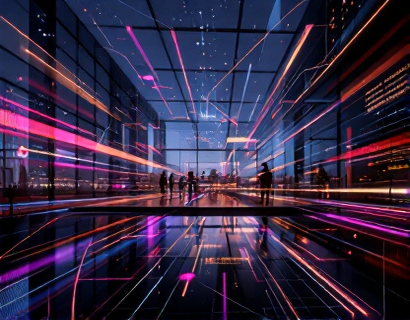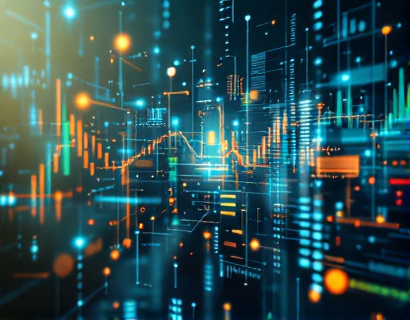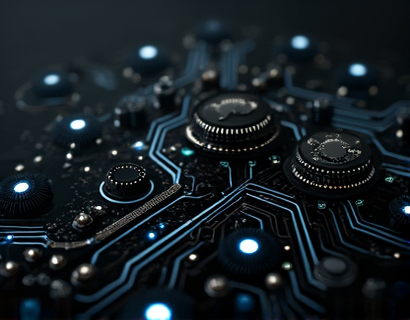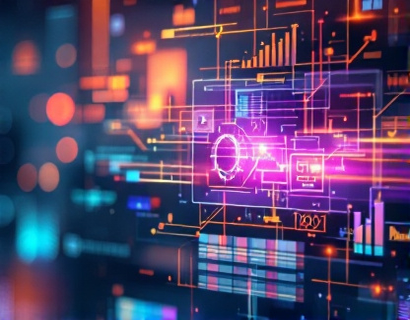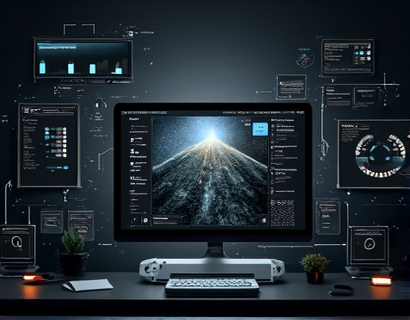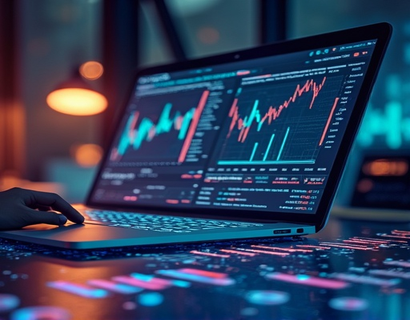Decentralized Innovation: Unleashing Next-Gen Digital Transformation with AI and Crypto Synergy
The digital landscape is undergoing a profound transformation, driven by the synergistic power of artificial intelligence (AI) and cryptocurrency. This revolution is not just about adopting new technologies but about reimagining how we interact, transact, and innovate in a decentralized environment. The convergence of AI and crypto is giving birth to a new era of decentralized applications and services, fundamentally altering the way we approach digital transformation. This article delves into the intricacies of this synergy, exploring how it is reshaping industries and empowering users with unprecedented levels of control and efficiency.
Understanding Decentralized Innovation
Decentralized innovation refers to the development and implementation of technologies and systems that operate without a central authority or intermediary. This approach leverages blockchain technology, a distributed ledger that ensures transparency, security, and immutability. By removing the need for central control, decentralized systems foster a more democratic and resilient digital ecosystem. The integration of AI further enhances this ecosystem by providing intelligent, adaptive, and autonomous solutions that can learn from data, recognize patterns, and make decisions with minimal human intervention.
The Role of AI in Decentralized Systems
AI plays a crucial role in decentralized systems by enabling them to function more efficiently and effectively. Machine learning algorithms can process vast amounts of data to optimize resource allocation, predict user behavior, and enhance security measures. In a decentralized context, AI can facilitate smart contract execution, automate consensus mechanisms, and improve the overall user experience. For instance, AI-driven oracles can provide reliable and tamper-proof data feeds to smart contracts, ensuring that they operate based on accurate and up-to-date information.
Cryptocurrency as a Catalyst for Decentralization
Cryptocurrency is the digital equivalent of cash in a decentralized world, serving as a medium of exchange that operates independently of traditional financial institutions. Blockchain technology, the backbone of cryptocurrencies, ensures that transactions are secure, transparent, and verifiable without the need for intermediaries. This decentralization reduces friction, lowers costs, and increases accessibility, making it an ideal foundation for decentralized applications and services. Cryptocurrencies also enable new economic models, such as tokenization, which can represent ownership, assets, or utility in a digital form, further expanding the possibilities of decentralized innovation.
Synergy Between AI and Crypto
The combination of AI and cryptocurrency creates a powerful synergy that drives next-generation digital transformation. AI can enhance the functionality and security of blockchain networks, while blockchain can provide a trustless and transparent environment for AI models to operate. For example, AI can be used to develop more efficient consensus algorithms, reducing energy consumption and increasing the scalability of blockchain networks. Conversely, blockchain can ensure the integrity and traceability of AI data, preventing manipulation and bias.
Enhanced Security Through AI and Crypto
Security is a paramount concern in both AI and cryptocurrency domains. The integration of AI and crypto can significantly bolster security measures. AI can detect and respond to threats in real-time, identifying anomalies and potential vulnerabilities in blockchain networks. Smart contracts can be designed with AI-driven security protocols to automatically enforce rules and prevent unauthorized access. Additionally, cryptographic techniques can be enhanced by AI to create more robust encryption methods, ensuring that sensitive data remains protected.
Improved User Experience and Engagement
The synergy between AI and crypto also leads to improved user experiences and higher engagement levels. AI can personalize user interfaces and interactions, tailoring services to individual preferences and behaviors. This personalization is particularly valuable in decentralized applications, where users expect a seamless and intuitive experience. Moreover, AI-powered chatbots and virtual assistants can provide 24/7 support, answering queries and guiding users through complex processes, thereby enhancing user satisfaction and retention.
Case Studies and Real-World Applications
Several projects and platforms are already leveraging the power of AI and crypto to drive decentralized innovation. One notable example is Decentralized Finance (DeFi), which uses blockchain and AI to create financial services that are open, transparent, and accessible to everyone. DeFi platforms offer a range of services, including lending, borrowing, and trading, all executed through smart contracts. AI algorithms can optimize these services by predicting market trends, managing risks, and automating transactions.
Another area where AI and crypto synergy is making waves is in the realm of supply chain management. Blockchain ensures transparency and traceability, while AI can analyze vast amounts of data to optimize logistics, predict demand, and reduce costs. For instance, a decentralized supply chain platform can use AI to monitor and manage inventory in real-time, ensuring that products are delivered efficiently and sustainably. This not only enhances operational efficiency but also builds trust among stakeholders by providing verifiable and immutable records.
Challenges and Considerations
While the potential of AI and crypto synergy is immense, there are several challenges and considerations that need to be addressed. Scalability remains a significant issue, as blockchain networks often struggle to handle high transaction volumes. AI models require substantial computational resources, which can strain blockchain infrastructure. Additionally, regulatory uncertainties and the need for standardization can hinder widespread adoption. Ensuring user privacy and data protection is also crucial, as the combination of AI and crypto involves handling sensitive information.
Scalability Solutions
To address scalability, layer 2 solutions such as sidechains and state channels are being developed. These solutions process transactions off the main blockchain, reducing congestion and lowering fees. AI can play a role in optimizing these solutions by predicting network conditions and dynamically adjusting resources. Furthermore, sharding, a technique that splits the blockchain into smaller, more manageable parts, can significantly enhance throughput. AI algorithms can help manage and coordinate these shards, ensuring seamless integration and performance.
Regulatory and Ethical Considerations
Regulatory frameworks are evolving to accommodate the rapid advancements in AI and crypto. Compliance with existing laws and the development of new regulations are essential to ensure that decentralized innovations are used responsibly. Ethical considerations, such as preventing misuse and ensuring fairness, must also be prioritized. Transparency in AI decision-making processes and the implementation of ethical guidelines can help build trust and acceptance among users and regulators.
Future Prospects and Opportunities
The future of decentralized innovation with AI and crypto synergy is bright, with numerous opportunities on the horizon. As technology continues to advance, we can expect more sophisticated and versatile decentralized applications. The integration of AI with other emerging technologies, such as the Internet of Things (IoT) and 5G, will further expand the capabilities of decentralized systems. These advancements will enable more intelligent, connected, and autonomous environments, transforming industries and enhancing the quality of life for individuals worldwide.
Moreover, the democratization of technology through decentralized platforms will empower a broader range of participants, fostering innovation and inclusivity. By removing barriers to entry and providing tools for decentralized development, the community can collaborate to create more robust and resilient systems. This collective effort will drive the next wave of digital transformation, unlocking new possibilities and driving economic growth.
In conclusion, the synergy between AI and crypto is revolutionizing the digital landscape, paving the way for a more decentralized, secure, and efficient future. By embracing this synergy, we can harness the full potential of decentralized innovation, leading to groundbreaking advancements that benefit society as a whole.






